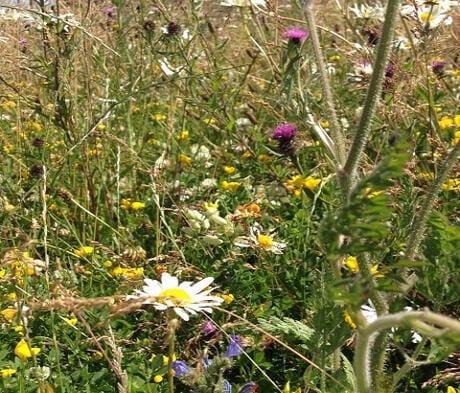+447709283333 | info@damavandpro.com

Planting Milkweed & Growing Instructions
Milkweed (Asclepias)
Planting milkweed: Milkweeds are among the most beautiful native wildflowers and garden plants. Aromatic clusters of flowers are a magnet for butterflies and other pollinators. Four species of native milkweed are found in most states: Asclepias verticillata, common milkweed, milkweed, and butterfly milkweed.
They’ll thrive in an exceedingly wide selection of garden and hayfield habitats, from the Japanese seacoast to the Rockies, together with southern Canada. Plant milkweed in your hayfield or garden to provide a much-needed environment and food for monarch butterflies, bees, and other useful insects. Follow our guide to find out how to plant and grow healthy milkweed.
Milkweed where to plant
Where to plant milkweed Light: As they grow, young milkweed plants require a lot of diffuse light. Plant in areas with full sun. Milkweed has a variety for every type of soil.
In average garden soil, common milkweed grows well. Swamp milkweed, as its name suggests, thrives in moist environments, making it ideal for wet meadows or rain gardens.
Tropical milkweed grows as an annual in the north and thrives in hot, humid climates.
Butterfly weed and whorled milkweed grow best in dry conditions. Milkweed develops large, deep root systems and does not like to be transplanted.
Grow Your Own Monarch Habitat with Common Milkweed in the UK
Common milkweed (Asclepias syriaca) is an herbaceous perennial plant native to the United States, but it can also be found in the UK. It is known for its distinctive, fragrant flowers & it’s important role as a host plant for monarch butterflies. The plant gets its name from the milky sap that is produced by its stems & leaves.
Common milkweed is a popular choice for gardens & landscapes due to its attractive flowers & its value as a habitat for pollinators. It grows well in well-draining soil in full sun & it can reach a height of up to 5 feet (1.5 meters). The plant bears large, spiky seed pods after producing clusters of pink or purple flowers in the summer.
It’s important to note that common milkweed can spread aggressively & may require regular maintenance to keep it in check. However, its benefits as a habitat plant & its attractive appearance make it a worthwhile addition to many gardens.
Milkweed when to plant
When to plant Milkweed plants can be planted in the spring or fall. Your milkweed plants will most likely arrive dormant in the spring, with no green leaves above the soil line. This is completely normal! At this point in its development, your milkweed’s energy is entirely focused on developing a strong root system. After planting your milkweed, you should see it “wake up” as the soil warms and begins to form leaves. Milkweed is often slow to awaken from dormancy when compared to other perennials in your garden. Don’t overwater them while they’re dormant.
Planting in the fall allows your plants to establish themselves before winter. This perennial plant returns in late spring in areas with cold winters.
Growing Milkweed From Seed: The simplest way to start milkweed from seed is to follow Mother Nature’s lead and plant it in the fall. If you really want to start your seeds in the spring, you must first break their dormancy with cold stratification, which we cover in our milkweed seed starting guide.

Step-by-Step Instructions for Planting Milkweed
- Begin with healthy plants that have established root systems.
- Make a hole twice as deep and twice as wide as the root ball of your milkweed plant. When planting multiple plants, you can amend the soil in each planting hole individually, or you can amend the entire bed before planting.
- If the roots are clinging to the pot’s sides, roughen them up to encourage outward growth.
- Plant your milkweed with the root ball’s top flush with the soil line. Backfill the soil around the plant and press firmly.
- Water thoroughly to compact the soil and remove air pockets.
How to Take Care of Milkweed Plant Habits of Growth:
- The majority of milkweed species grow in clumps. The common milkweed has a single stem.
- Staking is not necessary because milkweed plants have robust stems.
- Irrigation: Swamp milkweed species require either a location that is naturally damp or routine watering.
- Common and whorled milkweed, as well as butterfly weed, all prosper in dry environments.
- Milkweed doesn’t require fertilization. This native plant grows well in unfavorable soil.
- Mulching: If you’re trying to manage weeds, you can cover milkweed with leaf litter or finely chopped bark mulch. Butterfly weed and other milkweeds that prefer dry soil may not benefit from mulch’s ability to hold water.
- No trimming or pruning is required.

Final Care for Milkweed
We do not recommend dividing or transplanting milkweed plants once they have taken root in your garden or meadow because all milkweed, especially swamp milkweed, produces deep tap roots.
Over time, milkweed will organically reproduce and spread. The seeds can be saved and planted wherever you wish. Remove or secure all seed pods in the early fall, before they break open and disperse their seeds, if you wish to prevent volunteer seedlings in a garden environment.
Generally speaking, adult milkweed is unaffected by significant pests or illnesses. Aphids or whiteflies may take over your milkweed plants in specific circumstances. Spray them off with a jet of water. Be careful not to spray any areas where monarch egg clusters are developing on the afflicted plants. Before spraying, relocate any monarch larvae that have already hatched to a sterile area.
Top Products

Sainfoin Seed (Agricultural)


“This article was so helpful! It answered all of my questions about how to plant and grow milkweed. I’m so excited to start my own butterfly garden now!” – Sarah
As a passionate gardener and monarch butterfly conservationist, I highly recommend the “Planting Milkweed & Growing Instructions” guide. This comprehensive resource has transformed me from a novice milkweed grower into a confident advocate for monarch butterfly conservation.
“I am so grateful for this blog post on planting and growing milkweed. It has been a lifesaver for me and my monarch butterfly garden. I have been able to successfully grow several different types of milkweed, and I have seen a significant increase in the number of monarch butterflies visiting my home. I would highly recommend this blog post to anyone who is interested in growing milkweed. It is a valuable resource that will help you to create a safe and healthy habitat for monarch butterflies.”